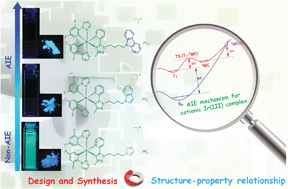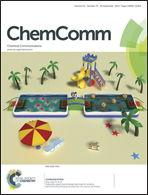Stepwise modulation of the electron-donating strength of ancillary ligands: understanding the AIE mechanism of cationic iridium(iii) complexes†
Abstract
The AIE mechanism for cationic Ir(III) complexes with triazole–pyridine ligands has been determined by the combination of an experimental and a computational study. Larger structural relaxation and weak emissive excited-state intraligand charge transfer (ILCT) characters are responsible for the non-emission in solution, whereas the non-radiative processes are efficiently restricted in the solid state, enhancing the emission.


 Please wait while we load your content...
Please wait while we load your content...